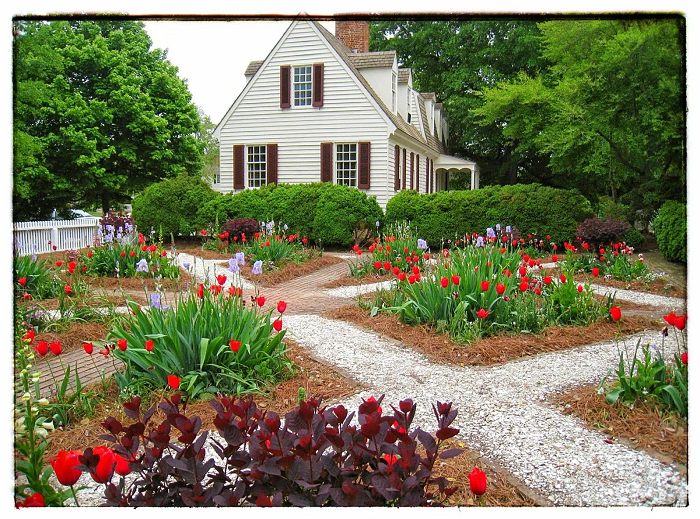The colonial garden is both tranquility and variety of colors. The main shade is green. Against its background, other colors look even more saturated. But brightness is not the only criterion for choosing plants.
They serve a practical role, because initially European colonialists were forced to set up gardens for food and to collect medicinal herbs. Therefore, landscaping includes:
- planting fruit trees, in particular citrus fruits. Coniferous trees are also appropriate here, filling the space with pleasant aromas. Trees with lush crowns, inherited by the style from the British, create a welcome shade in the hot weather;
- Lilac, barberry and chokeberry bushes are planted around the perimeter of the house or gazebo. Plantings create fragrant odors and delight the eye with bright colors. Trimming the bushes is barely noticeable and is mainly aimed at forming a spherical crown, although one should not be surprised at the intricate shapes: the French roots of the style are telling;
- Flower beds and flower beds create accents in the form of bright spots. For their planting, variegated, contrasting solitaire plants are selected, that is, solo flowers that are single in planting. Peonies, marigolds, violet, medicinal plants – echinacea, mint and nasturtium – bloom in orange, pink, burgundy and other shades, reminiscent of oriental motifs. There are no strict rules for placing flower beds. They serve as a frame for paths, pools, terraces and fences.
In the colonial style, plants are planted not only in the ground, but also in tubs, which is very practical for heat-loving varieties. Thanks to this solution, the area is filled with palm trees and cacti, which “move” into the house when cold weather sets in. However, you will not see plastic pots or tubs. Only stone, wood and clay, creating splashes of terracotta color.

